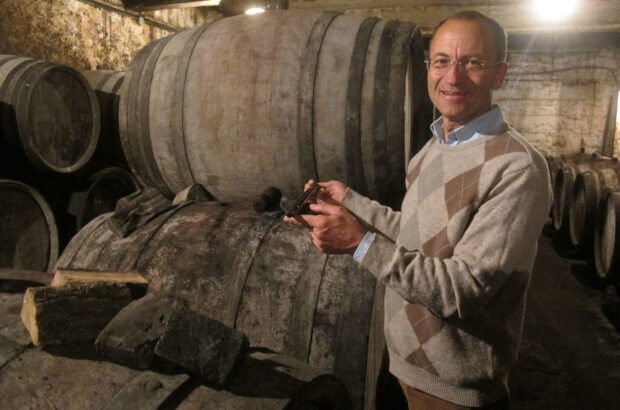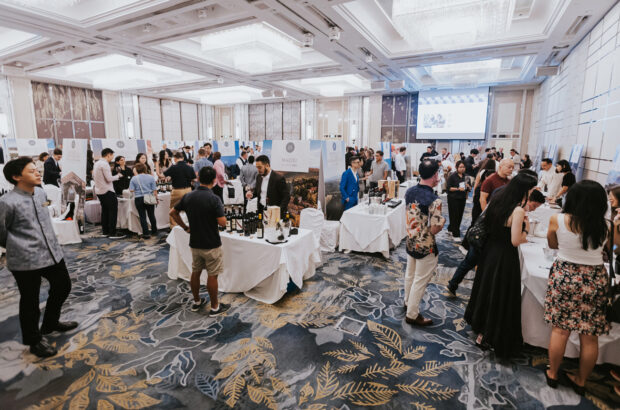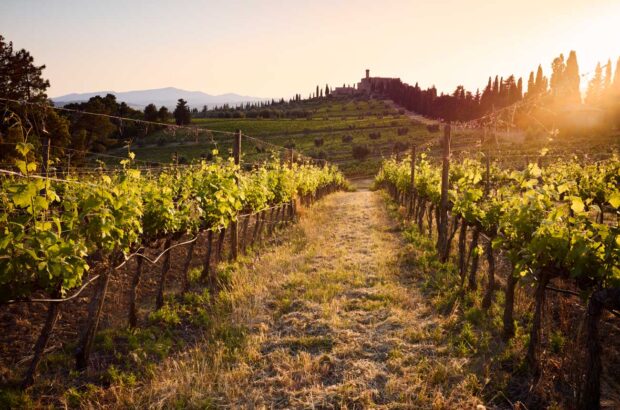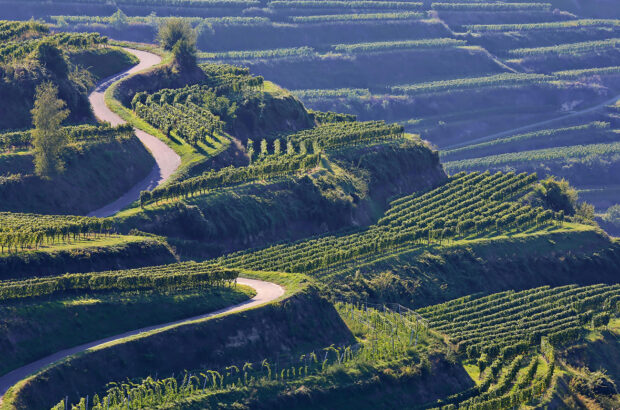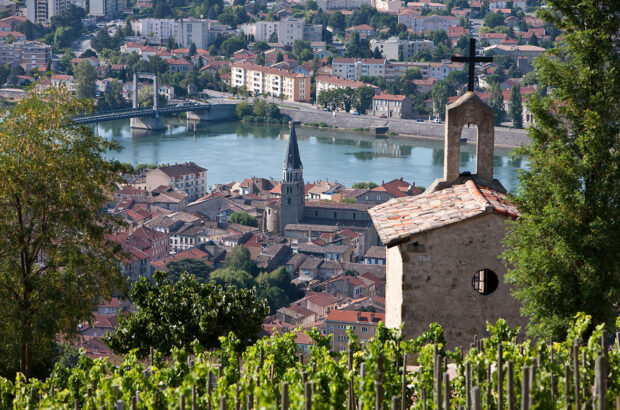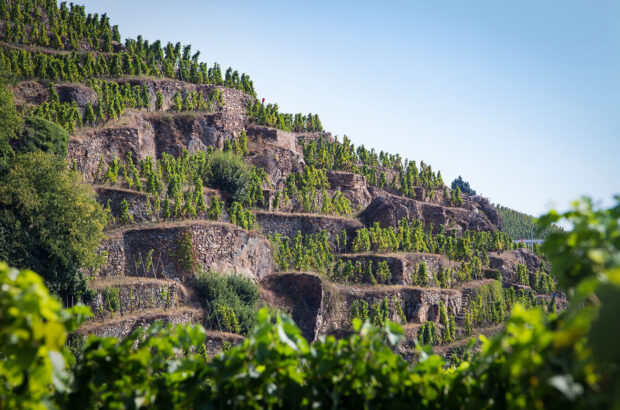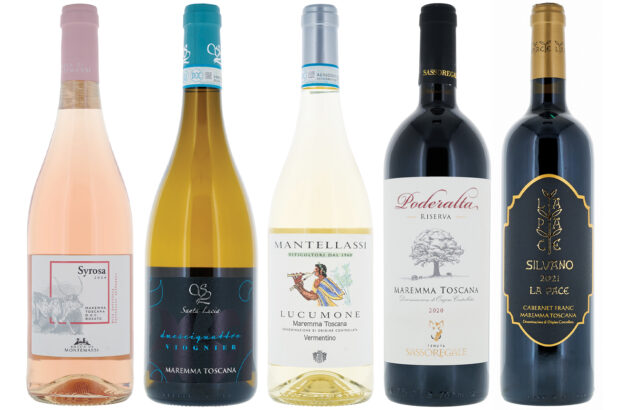The words ‘Costa del Sol’ conjure up and not-always-tasteful luxury – designer shops, glitzy nightclubs, shiny supercars and yacht-studded marinas marking the Costa out as a playground of the rich.
It’s true, all that does exist along Spain’s southernmost coastline, notably the western stretch between Marbella and Manilva, including ultra-extravagant resort town Puerto Banús. But what happens along the other two-thirds of Málaga’s sun coast? Let’s have a look.
Officially the Costa del Sol lies within Málaga province, stretching between Nerja in the east to Manilva in the west. Sotogrande (Cádiz province) also gets an honourable mention since, although not technically a part of the Costa del Sol, it shares its tourist identity and people who live there consider themselves to be a vital part of the Costa lifestyle.
The entire Costa is on the Mediterranean, but geographically and culturally the two halves of the east/west divide – taking Málaga city as the median – could hardly be more different: each offers a contrast of landscapes, microclimates, lifestyles and culture – and, of course, gastronomy and wines.
{"content":"PHA+TGV04oCZcyBhc3N1bWUgeW91IGhhdmUgYXJyaXZlZCBpbiBNw6FsYWdhIChhbHdheXMgYSBnb29kIGNob2ljZSkg4oCTIGluIHRoaXMgYXJ0aWNsZSwgd2Ugc2hhbGwgb2ZmZXIgeW91IHBsZW50eSBvZiBpZGVhcyBmb3Igc29tZSBkZWNpZGVkbHkgdW4tZ2xhbSBDb3N0YSBkZWwgU29sIHBsYWNlcyB0byBjaGVjayBvdXQsIGRlcGVuZGluZyBvbiB3aGV0aGVyIHlvdSBvcHQgdG8gdHVybiB0byB0aGUgZWFzdCBvciB3ZXN0LiBJdOKAmXMgbm90IGEgbGlzdCBhcyBzdWNoLCBtb3JlIGEgcGljay1uLW1peCBzZWxlY3Rpb24gb2YgZGVzdGluYXRpb25zIHRoYXQgd2lsbCBlbmFibGUgeW91IHRvIHRhaWxvciB5b3VyIHJvdXRlIGRlcGVuZGluZyBvbiB5b3VyIGRheS4gUmVtZW1iZXIgdG8gYm9vayBhbGwgYWN0aXZpdGllcyBhbmQgcmVzdGF1cmFudHMgaW4gYWR2YW5jZSwgYW5kIGJlYXIgaW4gbWluZCB0aGF0IHlvdSB3aWxsIG5lZWQgYSBjYXIgZm9yIG1vc3Qgb2YgdGhlc2UgZGF5IHRyaXBzLiBUaGUgZGlzdGFuY2Ugb2YgZWFjaCByZWNvbW1lbmRlZCBzcG90IGZyb20gTcOhbGFnYSwgaW4ga2lsb21ldHJlcywgaXMgbm90ZWQgaW4gYnJhY2tldHMsIHRvIGhlbHAgeW91IHBsYW4geW91ciBvdXRpbmdzIGFuZCBpdGluZXJhcmllcy48L3A+CjxwPjxkaXYgY2xhc3M9ImFkLWNvbnRhaW5lciBhZC1jb250YWluZXItLW1vYmlsZSI+PGRpdiBpZD0icG9zdC1pbmxpbmUtMiIgY2xhc3M9ImlwYy1hZHZlcnQiPjwvZGl2PjwvZGl2PjwvcD4KPGRpdiBpZD0iYXR0YWNobWVudF81Njg4ODAiIHN0eWxlPSJ3aWR0aDogMTMxMHB4IiBjbGFzcz0id3AtY2FwdGlvbiBhbGlnbm5vbmUiPjxpbWcgZmV0Y2hwcmlvcml0eT0iaGlnaCIgZGVjb2Rpbmc9ImFzeW5jIiBhcmlhLWRlc2NyaWJlZGJ5PSJjYXB0aW9uLWF0dGFjaG1lbnQtNTY4ODgwIiBjbGFzcz0ibGF6eWxvYWQgYmx1ci11cCBzaXplLWZ1bGwgd3AtaW1hZ2UtNTY4ODgwIiBkYXRhLXByb2Nlc3NlZCBzcmM9Imh0dHBzOi8vd3d3LmRlY2FudGVyLmNvbS5tYXN0ZXIucHVibGljLmtleXN0b25lLXByb2QtZWtzLWV1dzEuZnV0dXJlcGxjLmVuZ2luZWVyaW5nL3dwLWNvbnRlbnQvdGhlbWVzL3NpbWJhLXRoZW1lL2Fzc2V0cy9pbWFnZXMvcGxhY2Vob2xkZXIucG5nIiBkYXRhLXNyYz0iaHR0cHM6Ly9rZXlhc3NldHMudGltZWluY3VrLm5ldC9pbnNwaXJld3AvbGl2ZS93cC1jb250ZW50L3VwbG9hZHMvc2l0ZXMvMzQvMjAyNS8xMC9ERVMzMTYuY29zdGFfZGVsX3NvbC5jb3N0YV9kZWxfc29sX21hcF9uZXcuanBnIiBhbHQ9Ik1hcCBvZiBDb3N0YSBkZWwgU29sIiB3aWR0aD0iMTMwMCIgaGVpZ2h0PSIzNjgiIGRhdGEtc2l6ZXM9ImF1dG8iIGRhdGEtc3Jjc2V0PSJodHRwczovL2tleWFzc2V0cy50aW1laW5jdWsubmV0L2luc3BpcmV3cC9saXZlL3dwLWNvbnRlbnQvdXBsb2Fkcy9zaXRlcy8zNC8yMDI1LzEwL0RFUzMxNi5jb3N0YV9kZWxfc29sLmNvc3RhX2RlbF9zb2xfbWFwX25ldy5qcGcgMTMwMHcsIGh0dHBzOi8va2V5YXNzZXRzLnRpbWVpbmN1ay5uZXQvaW5zcGlyZXdwL2xpdmUvd3AtY29udGVudC91cGxvYWRzL3NpdGVzLzM0LzIwMjUvMTAvREVTMzE2LmNvc3RhX2RlbF9zb2wuY29zdGFfZGVsX3NvbF9tYXBfbmV3LTMwMHg4NS5qcGcgMzAwdywgaHR0cHM6Ly9rZXlhc3NldHMudGltZWluY3VrLm5ldC9pbnNwaXJld3AvbGl2ZS93cC1jb250ZW50L3VwbG9hZHMvc2l0ZXMvMzQvMjAyNS8xMC9ERVMzMTYuY29zdGFfZGVsX3NvbC5jb3N0YV9kZWxfc29sX21hcF9uZXctNjMweDE3OC5qcGcgNjMwdywgaHR0cHM6Ly9rZXlhc3NldHMudGltZWluY3VrLm5ldC9pbnNwaXJld3AvbGl2ZS93cC1jb250ZW50L3VwbG9hZHMvc2l0ZXMvMzQvMjAyNS8xMC9ERVMzMTYuY29zdGFfZGVsX3NvbC5jb3N0YV9kZWxfc29sX21hcF9uZXctMTM1eDM4LmpwZyAxMzV3LCBodHRwczovL2tleWFzc2V0cy50aW1laW5jdWsubmV0L2luc3BpcmV3cC9saXZlL3dwLWNvbnRlbnQvdXBsb2Fkcy9zaXRlcy8zNC8yMDI1LzEwL0RFUzMxNi5jb3N0YV9kZWxfc29sLmNvc3RhX2RlbF9zb2xfbWFwX25ldy0zMjB4OTEuanBnIDMyMHcsIGh0dHBzOi8va2V5YXNzZXRzLnRpbWVpbmN1ay5uZXQvaW5zcGlyZXdwL2xpdmUvd3AtY29udGVudC91cGxvYWRzL3NpdGVzLzM0LzIwMjUvMTAvREVTMzE2LmNvc3RhX2RlbF9zb2wuY29zdGFfZGVsX3NvbF9tYXBfbmV3LTYyMHgxNzYuanBnIDYyMHcsIGh0dHBzOi8va2V5YXNzZXRzLnRpbWVpbmN1ay5uZXQvaW5zcGlyZXdwL2xpdmUvd3AtY29udGVudC91cGxvYWRzL3NpdGVzLzM0LzIwMjUvMTAvREVTMzE2LmNvc3RhX2RlbF9zb2wuY29zdGFfZGVsX3NvbF9tYXBfbmV3LTkyMHgyNjAuanBnIDkyMHcsIGh0dHBzOi8va2V5YXNzZXRzLnRpbWVpbmN1ay5uZXQvaW5zcGlyZXdwL2xpdmUvd3AtY29udGVudC91cGxvYWRzL3NpdGVzLzM0LzIwMjUvMTAvREVTMzE2LmNvc3RhX2RlbF9zb2wuY29zdGFfZGVsX3NvbF9tYXBfbmV3LTEyMjB4MzQ1LmpwZyAxMjIwdyIgc2l6ZXM9IihtYXgtd2lkdGg6IDEzMDBweCkgMTAwdncsIDEzMDBweCIgLz48cCBpZD0iY2FwdGlvbi1hdHRhY2htZW50LTU2ODg4MCIgY2xhc3M9IndwLWNhcHRpb24tdGV4dCI+Q3JlZGl0OiBKUCBNYXAgR3JhcGhpY3MgTHRkPC9wPjwvZGl2Pgo8aHI+CjxoMj5Nw6FsYWdhPC9oMj4KPGgzPkVwaWN1cmVhbiBhcHBlYWw8L2gzPgo8cD5Nw6FsYWdh4oCZcyBwcm92aW5jaWFsIGNhcGl0YWwgY2l0eSBoYXMgY2VydGFpbmx5IHJlaW52ZW50ZWQgaXRzZWxmIG92ZXIgdGhlIHBhc3QgMTAgdG8gMTUgeWVhcnMuIE5ldyBtdXNldW1zLCB3b3JsZC1jbGFzcyBnYXN0cm9ub215LCBhIHJlbm92YXRlZCBwb3J0IGFuZCAxNGttIG9mIGJlYWNoZnJvbnQgaGF2ZSB0dXJuZWQgd2hhdCB1c2VkIHRvIGJlIGNvbnNpZGVyZWQgYSBtZXJlIHBvaW50IG9mIGFycml2YWwgaW50byB0aGUgY3VsdHVyYWwgaHViIG9mIHRoZSByZWdpb24sIGFuZCBhIHNlcmlvdXMgdHJhdmVsIGRlc3RpbmF0aW9uIGluIGl0c2VsZi48L3A+CjxwPkluIGFkZGl0aW9uIHRvIGhhdmluZyBpdHMgb3duIHdpbmUgbXVzZXVtLCB0aGUgPHN0cm9uZz48YSBocmVmPSJodHRwczovL211c2Vvdmlub21hbGFnYS5jb20vIiB0YXJnZXQ9Il9ibGFuayIgcmVsPSJub2ZvbGxvdyBub29wZW5lciI+TXVzZW8gZGVsIFZpbm88L2E+PC9zdHJvbmc+LCBNw6FsYWdhIGJvYXN0cyBhIGNvdXBsZSBvZiBvdGhlciBzbGlnaHRseSBvZmYtdGhlLXJhZGFyIG11c2V1bXMgdGhhdCBhcmUgd2VsbCB3b3J0aCBjaGVja2luZyBvdXQuIFRoZSA8c3Ryb25nPjxhIGhyZWY9Imh0dHBzOi8vbXVzZW9hdXRvbW92aWxtb2RhLmNvbS8iIHRhcmdldD0iX2JsYW5rIiByZWw9Im5vZm9sbG93IG5vb3BlbmVyIj5NQU0gTXVzZW8gZGVsIEF1dG9tw7N2aWwgeSBsYSBNb2RhPC9hPjwvc3Ryb25nPiBpcyBhIHN1cnByaXNpbmcgYW5kIGRlbGlnaHRmdWwgbWl4IG9mIHR3byBmYXNoaW9uYWJsZSB3b3JsZHMsIHdpdGggdGhlIGNsb3RoaW5nIGV4aGliaXQgcm90YXRlZCBldmVyeSBzaXggbW9udGhzLiBBbmQsIGxvY2F0ZWQgd2l0aGluIHRoZSAxOHRoLWNlbnR1cnkgaG9tZSBvZiBoaXN0b3JpYW4gR29uemFsbyBGZXJuw6FuZGV6LVByaWV0bywgdGhlIGdsYXNzIGFuZCBjcnlzdGFsIG11c2V1bSA8c3Ryb25nPjxhIGhyZWY9Imh0dHBzOi8vbXVzZW92aWRyaW95Y3Jpc3RhbG1hbGFnYS5jb20vIiB0YXJnZXQ9Il9ibGFuayIgcmVsPSJub2ZvbGxvdyBub29wZW5lciI+TXVzZW8gZGVsIFZpZHJpbyB5IENyaXN0YWw8L2E+PC9zdHJvbmc+IGhvdXNlcyBhbiBleHF1aXNpdGUgcHJpdmF0ZSBjb2xsZWN0aW9uIG9mIG1vcmUgdGhhbiAzLDAwMCBwaWVjZXMsIGFsb25nIHdpdGggcGFpbnRpbmdzIGFuZCBvdGhlciBkZWNvcmF0aXZlIG9iamVjdHMuPC9wPgo8ZGl2IGNsYXNzPSJhZC1jb250YWluZXIgYWQtY29udGFpbmVyLS1tb2JpbGUiPjxkaXYgaWQ9InBvc3QtaW5saW5lLTMiIGNsYXNzPSJpcGMtYWR2ZXJ0Ij48L2Rpdj48L2Rpdj4KPHA+VGhlcmUgaXMgbm8gc2hvcnRhZ2Ugb2YgdG9wIHRhcGFzIGJhcnMsIHJlc3RhdXJhbnRzIGFuZCB3aW5lIGJhcnMgaW4gdG93biwgaW5jbHVkaW5nIEp1bGnDoW4gU2FuanXDoW7igJlzIDxzdHJvbmc+PGEgaHJlZj0iaHR0cHM6Ly9sb3NwYXRpb3NkZWJlYXRhcy5jb20vIiB0YXJnZXQ9Il9ibGFuayIgcmVsPSJub2ZvbGxvdyBub29wZW5lciI+TG9zIFBhdGlvcyBkZSBCZWF0YXM8L2E+PC9zdHJvbmc+IHZpbm90ZWNhIGFuZCByZXN0YXVyYW50LCBhbmQgTWljaGVsaW4gb25lLXN0YXIgPHN0cm9uZz48YSBocmVmPSJodHRwczovL3d3dy5yZXN0YXVyYW50ZWthbGVqYS5jb20vIiB0YXJnZXQ9Il9ibGFuayIgcmVsPSJub2ZvbGxvdyBub29wZW5lciI+S2FsZWphPC9hPjwvc3Ryb25nPsKgYnkgbWFsYWd1ZcOxbyBzdGFyIGNoZWYgRGFuaSBDYXJuZXJvLjwvcD4KPHA+QnV0IGl0IGlzIGFsc28gd29ydGggdHJhdmVsbGluZyBub3J0aGVhc3Qgb2YgdGhlIGNpdHkgKDI2a20gZnJvbSBNw6FsYWdhKSwgdG8gdGhlIDxzdHJvbmc+PGEgaHJlZj0iaHR0cHM6Ly92aXNpdGEubWFsYWdhLmV1L2VuL3doYXQtdG8tc2VlLWFuZC1kby9uYXR1cmUvbmF0dXJhbC1hcmVhcyIgdGFyZ2V0PSJfYmxhbmsiIHJlbD0ibm9mb2xsb3cgbm9vcGVuZXIiPk1vbnRlcyBkZSBNw6FsYWdhIG5hdHVyYWwgcGFyazwvYT48L3N0cm9uZz4gZm9yIGEgc3BlY2lhbCBtb3VudGFpbiB3aW5lcnkgdmlzaXQuPC9wPgo8ZGl2IGNsYXNzPSJhZC1jb250YWluZXIgYWQtY29udGFpbmVyLS1tb2JpbGUiPjxkaXYgaWQ9InBvc3QtaW5saW5lLTQiIGNsYXNzPSJpcGMtYWR2ZXJ0Ij48L2Rpdj48L2Rpdj4KPGRpdiBpZD0iYXR0YWNobWVudF81Njg4ODIiIHN0eWxlPSJ3aWR0aDogMTMxMHB4IiBjbGFzcz0id3AtY2FwdGlvbiBhbGlnbm5vbmUiPjxpbWcgZGVjb2Rpbmc9ImFzeW5jIiBhcmlhLWRlc2NyaWJlZGJ5PSJjYXB0aW9uLWF0dGFjaG1lbnQtNTY4ODgyIiBjbGFzcz0ibGF6eWxvYWQgYmx1ci11cCBzaXplLWZ1bGwgd3AtaW1hZ2UtNTY4ODgyIiBkYXRhLXByb2Nlc3NlZCBzcmM9Imh0dHBzOi8vd3d3LmRlY2FudGVyLmNvbS5tYXN0ZXIucHVibGljLmtleXN0b25lLXByb2QtZWtzLWV1dzEuZnV0dXJlcGxjLmVuZ2luZWVyaW5nL3dwLWNvbnRlbnQvdGhlbWVzL3NpbWJhLXRoZW1lL2Fzc2V0cy9pbWFnZXMvcGxhY2Vob2xkZXIucG5nIiBkYXRhLXNyYz0iaHR0cHM6Ly9rZXlhc3NldHMudGltZWluY3VrLm5ldC9pbnNwaXJld3AvbGl2ZS93cC1jb250ZW50L3VwbG9hZHMvc2l0ZXMvMzQvMjAyNS8xMC9ERVMzMTYuY29zdGFfZGVsX3NvbC4zYmNnODA2X2NyZWRpdF9pbWFnZWJyb2tlcl9jb21fYWxhbXkuanBnIiBhbHQ9IlRoZSBrYXJzdCBsaW1lc3RvbmUgcm9ja2Zvcm1hdGlvbnMgb2YgRWwgVG9yY2FsIGxvb2tpbmcgdG93YXJkcyBNb250ZXMgZGUgTcOhbGFnYSBuYXR1cmFsIHBhcmsiIHdpZHRoPSIxMzAwIiBoZWlnaHQ9Ijc2NCIgZGF0YS1zaXplcz0iYXV0byIgZGF0YS1zcmNzZXQ9Imh0dHBzOi8va2V5YXNzZXRzLnRpbWVpbmN1ay5uZXQvaW5zcGlyZXdwL2xpdmUvd3AtY29udGVudC91cGxvYWRzL3NpdGVzLzM0LzIwMjUvMTAvREVTMzE2LmNvc3RhX2RlbF9zb2wuM2JjZzgwNl9jcmVkaXRfaW1hZ2Vicm9rZXJfY29tX2FsYW15LmpwZyAxMzAwdywgaHR0cHM6Ly9rZXlhc3NldHMudGltZWluY3VrLm5ldC9pbnNwaXJld3AvbGl2ZS93cC1jb250ZW50L3VwbG9hZHMvc2l0ZXMvMzQvMjAyNS8xMC9ERVMzMTYuY29zdGFfZGVsX3NvbC4zYmNnODA2X2NyZWRpdF9pbWFnZWJyb2tlcl9jb21fYWxhbXktMzAweDE3Ni5qcGcgMzAwdywgaHR0cHM6Ly9rZXlhc3NldHMudGltZWluY3VrLm5ldC9pbnNwaXJld3AvbGl2ZS93cC1jb250ZW50L3VwbG9hZHMvc2l0ZXMvMzQvMjAyNS8xMC9ERVMzMTYuY29zdGFfZGVsX3NvbC4zYmNnODA2X2NyZWRpdF9pbWFnZWJyb2tlcl9jb21fYWxhbXktNjMweDM3MC5qcGcgNjMwdywgaHR0cHM6Ly9rZXlhc3NldHMudGltZWluY3VrLm5ldC9pbnNwaXJld3AvbGl2ZS93cC1jb250ZW50L3VwbG9hZHMvc2l0ZXMvMzQvMjAyNS8xMC9ERVMzMTYuY29zdGFfZGVsX3NvbC4zYmNnODA2X2NyZWRpdF9pbWFnZWJyb2tlcl9jb21fYWxhbXktMTM1eDc5LmpwZyAxMzV3LCBodHRwczovL2tleWFzc2V0cy50aW1laW5jdWsubmV0L2luc3BpcmV3cC9saXZlL3dwLWNvbnRlbnQvdXBsb2Fkcy9zaXRlcy8zNC8yMDI1LzEwL0RFUzMxNi5jb3N0YV9kZWxfc29sLjNiY2c4MDZfY3JlZGl0X2ltYWdlYnJva2VyX2NvbV9hbGFteS0zMjB4MTg4LmpwZyAzMjB3LCBodHRwczovL2tleWFzc2V0cy50aW1laW5jdWsubmV0L2luc3BpcmV3cC9saXZlL3dwLWNvbnRlbnQvdXBsb2Fkcy9zaXRlcy8zNC8yMDI1LzEwL0RFUzMxNi5jb3N0YV9kZWxfc29sLjNiY2c4MDZfY3JlZGl0X2ltYWdlYnJva2VyX2NvbV9hbGFteS02MjB4MzY0LmpwZyA2MjB3LCBodHRwczovL2tleWFzc2V0cy50aW1laW5jdWsubmV0L2luc3BpcmV3cC9saXZlL3dwLWNvbnRlbnQvdXBsb2Fkcy9zaXRlcy8zNC8yMDI1LzEwL0RFUzMxNi5jb3N0YV9kZWxfc29sLjNiY2c4MDZfY3JlZGl0X2ltYWdlYnJva2VyX2NvbV9hbGFteS05MjB4NTQxLmpwZyA5MjB3LCBodHRwczovL2tleWFzc2V0cy50aW1laW5jdWsubmV0L2luc3BpcmV3cC9saXZlL3dwLWNvbnRlbnQvdXBsb2Fkcy9zaXRlcy8zNC8yMDI1LzEwL0RFUzMxNi5jb3N0YV9kZWxfc29sLjNiY2c4MDZfY3JlZGl0X2ltYWdlYnJva2VyX2NvbV9hbGFteS0xMjIweDcxNy5qcGcgMTIyMHciIHNpemVzPSIobWF4LXdpZHRoOiAxMzAwcHgpIDEwMHZ3LCAxMzAwcHgiIC8+PHAgaWQ9ImNhcHRpb24tYXR0YWNobWVudC01Njg4ODIiIGNsYXNzPSJ3cC1jYXB0aW9uLXRleHQiPlRoZSBrYXJzdCBsaW1lc3RvbmUgcm9jayBmb3JtYXRpb25zIG9mIEVsIFRvcmNhbCBsb29raW5nIHRvd2FyZHMgTW9udGVzIGRlIE3DoWxhZ2EgbmF0dXJhbCBwYXJrLiBDcmVkaXQ6IEltYWdlYnJva2VyLmNvbSAvIEFsYW15PC9wPjwvZGl2Pgo8cD5WaWN0b3JpYSBPcmRvw7FleiAoRE8gU2llcnJhcyBkZSBNw6FsYWdhKSBoYXMgYmVlbiBpbnZvbHZlZCBpbiB0aGUgTcOhbGFnYSB3aW5lIHNjZW5lIGFsbCBoZXIgbGlmZSBhbmQgaW4gMjAxNSBicmFuY2hlZCBvdXQgd2l0aCA8c3Ryb25nPjxhIGhyZWY9Imh0dHBzOi8vdmljdG9yaWFvcmRvbmV6LmNvbS8iIHRhcmdldD0iX2JsYW5rIiByZWw9Im5vZm9sbG93IG5vb3BlbmVyIj5oZXIgb3duIHByb2plY3Q8L2E+PC9zdHJvbmc+LiBTaGXigJlzIHByb2R1Y2luZyBoaWdoLXF1YWxpdHkgYXJ0aXNhbmFsIHdpbmVzIGF0IHRoZSBvbmx5IHdpbmVyeSB3aXRoaW4gdGhlIGNpdHkgbGltaXRzLCB3aXRoIHZpbmV5YXJkcyBsb2NhdGVkIGluIHRoZSBNb250ZXMgZGUgTcOhbGFnYSwganVzdCAyMCBtaW51dGVzIGF3YXkuIEhlciB0aHJlZS1ob3VyIE1vdW50YWluIFdpbmVzIFRvdXIgKGZyb20g4oKsNTAgcGVyIHBlcnNvbiwgaW5jbHVkaW5nIHdpbmVzIGFuZCBzbmFja3MpIGlzIGF2YWlsYWJsZSB1cG9uIHJlcXVlc3QgdmlhIHRoZSB3ZWJzaXRlIGxpbmtzLiBBbHNvIG91dCB0byB0aGUgbm9ydGhlYXN0IG9mIHRoZSBjaXR5LCBidXQgb25seSA1a20gYXdheSBpbiB0aGUgcnVyYWwgb3V0c2tpcnRzLCB5b3UgY2FuIGZpbmQgPHN0cm9uZz48YSBocmVmPSJodHRwczovL2xhdGFiZXJuYWRlbWlrZXBhbG1lci5jb20vIiB0YXJnZXQ9Il9ibGFuayIgcmVsPSJub2ZvbGxvdyBub29wZW5lciI+TGEgVGFiZXJuYSBkZSBNaWtlIFBhbG1lcjwvYT48L3N0cm9uZz4g4oCTIHRha2UgdGhlIENhbWlubyBkZSBsb3MgQWxtZW5kcmFsZXMgb3V0IG92ZXIgdGhlIEEtNyBtb3RvcndheSwgYW5kIGl04oCZcyByaWdodCBuZXh0IHRvIHRoZSBQaW5hciBlcXVlc3RyaWFuIGNsdWIuIERvbuKAmXQgYmUgZm9vbGVkIGJ5IHRoZSBuYW1lLCB0aGlzIGlzIG5vIGV4LXBhdCBiYXIg4oCTIGluZGVlZCwgaGVyZSwgbG9jYWwgY3VsaW5hcnkgbGVnZW5kIE1pZ3VlbCBQYWxtYeKAmXMgcnVzdGljIG91dGRvb3IgZ3JpbGwgb2ZmZXJzIG9uZSBvZiB0aGUgbW9zdCBzb3VnaHQtYWZ0ZXIgZGluaW5nIGV4cGVyaWVuY2VzIGluIHRoZSBwcm92aW5jZS48L3A+CjxkaXYgY2xhc3M9ImFkLWNvbnRhaW5lciBhZC1jb250YWluZXItLW1vYmlsZSI+PGRpdiBpZD0icG9zdC1pbmxpbmUtNSIgY2xhc3M9ImlwYy1hZHZlcnQiPjwvZGl2PjwvZGl2Pgo8aHI+CjxoMj5FYXN0IG9mIE3DoWxhZ2E8L2gyPgo8aDM+UnVnZ2VkIGFuZCBhbmNpZW50PC9oMz4KPHA+V2l0aCBpdHMgbW91bnRhaW5zIG92ZXJsb29raW5nIHRoZSBzZWEsIGxpbmVkIHdpdGggY2F2ZXMgYW5kIGNvdmVzLCB0aGlzIHNpZGUgb2YgdGhlIENvc3RhIGRlbCBTb2wgaXMgd2VsbCBzdWl0ZWQgdG8gbmF0dXJlIGVudGh1c2lhc3RzIOKAkyBhcyB3ZWxsIGFzIHdpbmUgbG92ZXJzLjwvcD4KPHA+SW4gdGhlIGVhc3Rlcm5tb3N0IHBhcnQgb2YgdGhlIHByb3ZpbmNlIG9mIE3DoWxhZ2EsIE5lcmphICg1N2ttKSBpcyBhIGNoYXJtaW5nLCBzdHJvbGxhYmxlIHRvd24gb2Ygd2luZGluZyBuYXJyb3cgc3RyZWV0cywgd2hpdGV3YXNoZWQgaG91c2VzLCBsaXR0bGUgc3F1YXJlcyBhbmQgY2h1cmNoZXMuIEhlcmUgeW91IHdpbGwgZmluZCB0aGUgbWFnbmlmaWNlbnQgQmFsY8OzbiBkZSBFdXJvcGEgKOKAmEV1cm9wZeKAmXMgYmFsY29ueeKAmSksIGEgcHJvbWVuYWRlIGJ1aWx0IG9uIHRoZSBlZGdlIG9mIGEgY2xpZmYgd2l0aCB2aWV3cyBvZiB0aGUgc3R1bm5pbmcgTWVkaXRlcnJhbmVhbiBjb2FzdGxpbmUgb24gZWl0aGVyIHNpZGUuPC9wPgo8cD5UaGUgc3BlY3RhY3VsYXIgPHN0cm9uZz48YSBocmVmPSJodHRwczovL2N1ZXZhZGVuZXJqYS5lcy8iIHRhcmdldD0iX2JsYW5rIiByZWw9Im5vZm9sbG93IG5vb3BlbmVyIj5OZXJqYSBjYXZlczwvYT48L3N0cm9uZz4sIGp1c3QgdG8gdGhlIG5vcnRoZWFzdCBvZiB0aGUgdG93biwgaG91c2Ugc29tZSBvZiB0aGUgZWFybGllc3Qga25vd24gZXhhbXBsZXMgb2YgaHVtYW4gYXJ0LCBkYXRpbmcgYmFjayA0MiwwMDAgeWVhcnMuIEFuIHVuZm9yZ2V0dGFibGUgZXhwZXJpZW5jZS48L3A+CjxkaXYgaWQ9ImF0dGFjaG1lbnRfNTY4ODg0IiBzdHlsZT0id2lkdGg6IDEzMTBweCIgY2xhc3M9IndwLWNhcHRpb24gYWxpZ25ub25lIj48aW1nIGRlY29kaW5nPSJhc3luYyIgYXJpYS1kZXNjcmliZWRieT0iY2FwdGlvbi1hdHRhY2htZW50LTU2ODg4NCIgY2xhc3M9Imxhenlsb2FkIGJsdXItdXAgc2l6ZS1mdWxsIHdwLWltYWdlLTU2ODg4NCIgZGF0YS1wcm9jZXNzZWQgc3JjPSJodHRwczovL3d3dy5kZWNhbnRlci5jb20ubWFzdGVyLnB1YmxpYy5rZXlzdG9uZS1wcm9kLWVrcy1ldXcxLmZ1dHVyZXBsYy5lbmdpbmVlcmluZy93cC1jb250ZW50L3RoZW1lcy9zaW1iYS10aGVtZS9hc3NldHMvaW1hZ2VzL3BsYWNlaG9sZGVyLnBuZyIgZGF0YS1zcmM9Imh0dHBzOi8va2V5YXNzZXRzLnRpbWVpbmN1ay5uZXQvaW5zcGlyZXdwL2xpdmUvd3AtY29udGVudC91cGxvYWRzL3NpdGVzLzM0LzIwMjUvMTAvRWwtU2FsYWRlcm8uanBnIiBhbHQ9IkZpc2ggZ3JpbGxlZCBvbiB0aGUgYmVhY2ggYXRSZXN0YXVyYW50ZSBFbCBTYWxhZGVybyIgd2lkdGg9IjEzMDAiIGhlaWdodD0iODYwIiBkYXRhLXNpemVzPSJhdXRvIiBkYXRhLXNyY3NldD0iaHR0cHM6Ly9rZXlhc3NldHMudGltZWluY3VrLm5ldC9pbnNwaXJld3AvbGl2ZS93cC1jb250ZW50L3VwbG9hZHMvc2l0ZXMvMzQvMjAyNS8xMC9FbC1TYWxhZGVyby5qcGcgMTMwMHcsIGh0dHBzOi8va2V5YXNzZXRzLnRpbWVpbmN1ay5uZXQvaW5zcGlyZXdwL2xpdmUvd3AtY29udGVudC91cGxvYWRzL3NpdGVzLzM0LzIwMjUvMTAvRWwtU2FsYWRlcm8tMzAweDE5OC5qcGcgMzAwdywgaHR0cHM6Ly9rZXlhc3NldHMudGltZWluY3VrLm5ldC9pbnNwaXJld3AvbGl2ZS93cC1jb250ZW50L3VwbG9hZHMvc2l0ZXMvMzQvMjAyNS8xMC9FbC1TYWxhZGVyby02MzB4NDE3LmpwZyA2MzB3LCBodHRwczovL2tleWFzc2V0cy50aW1laW5jdWsubmV0L2luc3BpcmV3cC9saXZlL3dwLWNvbnRlbnQvdXBsb2Fkcy9zaXRlcy8zNC8yMDI1LzEwL0VsLVNhbGFkZXJvLTEzNXg4OS5qcGcgMTM1dywgaHR0cHM6Ly9rZXlhc3NldHMudGltZWluY3VrLm5ldC9pbnNwaXJld3AvbGl2ZS93cC1jb250ZW50L3VwbG9hZHMvc2l0ZXMvMzQvMjAyNS8xMC9FbC1TYWxhZGVyby0zMjB4MjEyLmpwZyAzMjB3LCBodHRwczovL2tleWFzc2V0cy50aW1laW5jdWsubmV0L2luc3BpcmV3cC9saXZlL3dwLWNvbnRlbnQvdXBsb2Fkcy9zaXRlcy8zNC8yMDI1LzEwL0VsLVNhbGFkZXJvLTYyMHg0MTAuanBnIDYyMHcsIGh0dHBzOi8va2V5YXNzZXRzLnRpbWVpbmN1ay5uZXQvaW5zcGlyZXdwL2xpdmUvd3AtY29udGVudC91cGxvYWRzL3NpdGVzLzM0LzIwMjUvMTAvRWwtU2FsYWRlcm8tOTIweDYwOS5qcGcgOTIwdywgaHR0cHM6Ly9rZXlhc3NldHMudGltZWluY3VrLm5ldC9pbnNwaXJld3AvbGl2ZS93cC1jb250ZW50L3VwbG9hZHMvc2l0ZXMvMzQvMjAyNS8xMC9FbC1TYWxhZGVyby0xMjIweDgwNy5qcGcgMTIyMHciIHNpemVzPSIobWF4LXdpZHRoOiAxMzAwcHgpIDEwMHZ3LCAxMzAwcHgiIC8+PHAgaWQ9ImNhcHRpb24tYXR0YWNobWVudC01Njg4ODQiIGNsYXNzPSJ3cC1jYXB0aW9uLXRleHQiPkZpc2ggZ3JpbGxlZCBvbiB0aGUgYmVhY2ggYXQgUmVzdGF1cmFudGUgRWwgU2FsYWRlcm88L3A+PC9kaXY+CjxwPkhlYWRpbmcgYmFjayB0b3dhcmRzIE3DoWxhZ2EsIHBsYW4gYSBzdG9wIGF0IDxzdHJvbmc+UmVzdGF1cmFudGUgRWwgU2FsYWRlcm88L3N0cm9uZz4gKEBlbF9zYWxhZGVyb19jYWxldGEpIGluIENhbGV0YSBkZSBWw6lsZXogKDM0a20pLiBUaGlzIGZhbWlseS1ydW4gY2hpcmluZ3VpdG8gKGJlYWNoIGJhcikgc3RhbmRzIG91dCBmb3IgaXRzIHZhbHVlIGZvciBtb25leSBhbmQgdG9wLXF1YWxpdHkgZmlzaCBhbmQgc2VhZm9vZC4gU3RpY2sgeW91ciBmZWV0IGluIHRoZSBzYW5kIGFuZCB3YXRjaCB5b3VyIG9yZGVyIGJlaW5nIGdyaWxsZWQgb3ZlciBvcGVuIGNoYXJjb2FsIGp1c3QgYSBmZXcgZmVldCBhd2F5IGZyb20geW91ciB0YWJsZS48L3A+CjxwPklmIHlvdSBkZWNpZGUgdG8gaGVhZCBub3J0aCBmcm9tIE5lcmphIHlvdeKAmWxsIGZpbmQgdGhlIGltcG9zc2libHkgcHJldHR5IHRvd24gb2YgRnJpZ2lsaWFuYSBsZXNzIHRoYW4gMTBrbSBhd2F5ICg1NmttIGZyb20gTcOhbGFnYSkuIEl04oCZcyBhbiBleGNlbGxlbnQgc3RvcC1vZmYgcG9pbnQgdG8gZW5qb3kgbWFnbmlmaWNlbnQgdmlld3MgYmVmb3JlIGNvbnRpbnVpbmcgb24gdG8gdGhlIHRpbnkgd2hpdGUgbW91bnRhaW4gdmlsbGFnZSBvZiBTYXlhbG9uZ2EgKDQ1a20gZnJvbSBNw6FsYWdhLCAyOGttIGZyb20gRnJpZ2lsaWFuYSkgYW5kIDxzdHJvbmc+PGEgaHJlZj0iaHR0cHM6Ly9ib2RlZ2FzYmVudG9taXouY29tLyIgdGFyZ2V0PSJfYmxhbmsiIHJlbD0ibm9mb2xsb3cgbm9vcGVuZXIiPkJvZGVnYXMgQmVudG9taXo8L2E+PC9zdHJvbmc+IChETyBNw6FsYWdhLCBETyBTaWVycmFzIGRlIE3DoWxhZ2EpLCBmb3VuZGVkIGluIDIwMDMgYnkgY2hlZi9hcmNoaXRlY3QgQW5kcsOpIEJvdGggYW5kIHdpbmVtYWtlciBDbGFyYSBWZXJoZWlqLCBvcmlnaW5hbGx5IGZyb20gSG9sbGFuZC4gVGhlaXIgc3R1bm5pbmcgcHJvcGVydHksIGRlc2lnbmVkIGJ5IEFuZHLDqSwgb3Zlcmxvb2tzIHRoZSB2aWxsYWdlIGFuZCBob3VzZXMgYm90aCB0aGUgd2luZXJ5IGFuZCByZXN0YXVyYW50LiBWaXNpdHMgKGZyb20g4oKsMTkgcGVyIHBlcnNvbikgaW5jbHVkZSBhIHRvdXIgb2YgdGhlIGJvZGVnYSBhbmQgYSB0YXN0aW5nIGluIHRoZSByZXN0YXVyYW50LCB3aXRoIHRoZSBvcHRpb24gb2YgYm9va2luZyBhIHRocmVlLSwgZml2ZS0gb3IgMTAtY291cnNlIGx1bmNoIChmcm9tIOKCrDU5KSBzcGVjaWZpY2FsbHkgY3JlYXRlZCB0byBwYWlyIHdpdGggdGhlaXIgQXJpeWFuYXMgcmFuZ2Ugb2YgZHJ5IGFuZCBuYXR1cmFsbHkgc3dlZXQgd2luZXMsIG1hZGUgcHJpbWFyaWx5IGZyb20gTW9zY2F0ZWwgZGUgQWxlamFuZHLDrWEgYW5kIFJvbcOpIGdyYXBlcy48L3A+CjxkaXYgaWQ9ImF0dGFjaG1lbnRfNTY4ODgzIiBzdHlsZT0id2lkdGg6IDEzMTBweCIgY2xhc3M9IndwLWNhcHRpb24gYWxpZ25ub25lIj48aW1nIGxvYWRpbmc9ImxhenkiIGRlY29kaW5nPSJhc3luYyIgYXJpYS1kZXNjcmliZWRieT0iY2FwdGlvbi1hdHRhY2htZW50LTU2ODg4MyIgY2xhc3M9Imxhenlsb2FkIGJsdXItdXAgc2l6ZS1mdWxsIHdwLWltYWdlLTU2ODg4MyIgZGF0YS1wcm9jZXNzZWQgc3JjPSJodHRwczovL3d3dy5kZWNhbnRlci5jb20ubWFzdGVyLnB1YmxpYy5rZXlzdG9uZS1wcm9kLWVrcy1ldXcxLmZ1dHVyZXBsYy5lbmdpbmVlcmluZy93cC1jb250ZW50L3RoZW1lcy9zaW1iYS10aGVtZS9hc3NldHMvaW1hZ2VzL3BsYWNlaG9sZGVyLnBuZyIgZGF0YS1zcmM9Imh0dHBzOi8va2V5YXNzZXRzLnRpbWVpbmN1ay5uZXQvaW5zcGlyZXdwL2xpdmUvd3AtY29udGVudC91cGxvYWRzL3NpdGVzLzM0LzIwMjUvMTAvREVTMzE2LmNvc3RhX2RlbF9zb2wuZ2V0dHlpbWFnZXNfMTQ2MzMxMjkzNV9jcmVkaXRfeGJyY2h4X2dldHR5X2ltYWdlcy5qcGciIGFsdD0iTW9zYWljcyBhZG9ybiB0aGUgc3RyZWV0cyBpbiB0aGUgb2xkIHF1YXJ0ZXIgb2YgdGhlIHdoaXRlLXBhaW50ZWQgbW91bnRhaW4gdmlsbGFnZSBvZiBGcmlnaWxpYW5hIiB3aWR0aD0iMTMwMCIgaGVpZ2h0PSI4NjciIGRhdGEtc2l6ZXM9ImF1dG8iIGRhdGEtc3Jjc2V0PSJodHRwczovL2tleWFzc2V0cy50aW1laW5jdWsubmV0L2luc3BpcmV3cC9saXZlL3dwLWNvbnRlbnQvdXBsb2Fkcy9zaXRlcy8zNC8yMDI1LzEwL0RFUzMxNi5jb3N0YV9kZWxfc29sLmdldHR5aW1hZ2VzXzE0NjMzMTI5MzVfY3JlZGl0X3hicmNoeF9nZXR0eV9pbWFnZXMuanBnIDEzMDB3LCBodHRwczovL2tleWFzc2V0cy50aW1laW5jdWsubmV0L2luc3BpcmV3cC9saXZlL3dwLWNvbnRlbnQvdXBsb2Fkcy9zaXRlcy8zNC8yMDI1LzEwL0RFUzMxNi5jb3N0YV9kZWxfc29sLmdldHR5aW1hZ2VzXzE0NjMzMTI5MzVfY3JlZGl0X3hicmNoeF9nZXR0eV9pbWFnZXMtMzAweDIwMC5qcGcgMzAwdywgaHR0cHM6Ly9rZXlhc3NldHMudGltZWluY3VrLm5ldC9pbnNwaXJld3AvbGl2ZS93cC1jb250ZW50L3VwbG9hZHMvc2l0ZXMvMzQvMjAyNS8xMC9ERVMzMTYuY29zdGFfZGVsX3NvbC5nZXR0eWltYWdlc18xNDYzMzEyOTM1X2NyZWRpdF94YnJjaHhfZ2V0dHlfaW1hZ2VzLTYzMHg0MjAuanBnIDYzMHcsIGh0dHBzOi8va2V5YXNzZXRzLnRpbWVpbmN1ay5uZXQvaW5zcGlyZXdwL2xpdmUvd3AtY29udGVudC91cGxvYWRzL3NpdGVzLzM0LzIwMjUvMTAvREVTMzE2LmNvc3RhX2RlbF9zb2wuZ2V0dHlpbWFnZXNfMTQ2MzMxMjkzNV9jcmVkaXRfeGJyY2h4X2dldHR5X2ltYWdlcy0xMzV4OTAuanBnIDEzNXcsIGh0dHBzOi8va2V5YXNzZXRzLnRpbWVpbmN1ay5uZXQvaW5zcGlyZXdwL2xpdmUvd3AtY29udGVudC91cGxvYWRzL3NpdGVzLzM0LzIwMjUvMTAvREVTMzE2LmNvc3RhX2RlbF9zb2wuZ2V0dHlpbWFnZXNfMTQ2MzMxMjkzNV9jcmVkaXRfeGJyY2h4X2dldHR5X2ltYWdlcy0zMjB4MjEzLmpwZyAzMjB3LCBodHRwczovL2tleWFzc2V0cy50aW1laW5jdWsubmV0L2luc3BpcmV3cC9saXZlL3dwLWNvbnRlbnQvdXBsb2Fkcy9zaXRlcy8zNC8yMDI1LzEwL0RFUzMxNi5jb3N0YV9kZWxfc29sLmdldHR5aW1hZ2VzXzE0NjMzMTI5MzVfY3JlZGl0X3hicmNoeF9nZXR0eV9pbWFnZXMtNjIweDQxMy5qcGcgNjIwdywgaHR0cHM6Ly9rZXlhc3NldHMudGltZWluY3VrLm5ldC9pbnNwaXJld3AvbGl2ZS93cC1jb250ZW50L3VwbG9hZHMvc2l0ZXMvMzQvMjAyNS8xMC9ERVMzMTYuY29zdGFfZGVsX3NvbC5nZXR0eWltYWdlc18xNDYzMzEyOTM1X2NyZWRpdF94YnJjaHhfZ2V0dHlfaW1hZ2VzLTkyMHg2MTQuanBnIDkyMHcsIGh0dHBzOi8va2V5YXNzZXRzLnRpbWVpbmN1ay5uZXQvaW5zcGlyZXdwL2xpdmUvd3AtY29udGVudC91cGxvYWRzL3NpdGVzLzM0LzIwMjUvMTAvREVTMzE2LmNvc3RhX2RlbF9zb2wuZ2V0dHlpbWFnZXNfMTQ2MzMxMjkzNV9jcmVkaXRfeGJyY2h4X2dldHR5X2ltYWdlcy0xMjIweDgxNC5qcGcgMTIyMHciIHNpemVzPSIobWF4LXdpZHRoOiAxMzAwcHgpIDEwMHZ3LCAxMzAwcHgiIC8+PHAgaWQ9ImNhcHRpb24tYXR0YWNobWVudC01Njg4ODMiIGNsYXNzPSJ3cC1jYXB0aW9uLXRleHQiPk1vc2FpY3MgYWRvcm4gdGhlIHN0cmVldHMgaW4gdGhlIG9sZCBxdWFydGVyIG9mIHRoZSB3aGl0ZS1wYWludGVkIG1vdW50YWluIHZpbGxhZ2Ugb2YgRnJpZ2lsaWFuYS4gQ3JlZGl0OiBYYnJjaHggLyBHZXR0eSBJbWFnZXM8L3A+PC9kaXY+CjxwPkNsb3NlciB0byBNw6FsYWdhLCBpZiB5b3XigJlyZSBzZXR0aW5nIG91dCBmcm9tIHRoZXJlIGZvciBhIGRheSwgaXMgPHN0cm9uZz5SaW5jw7NuIGRlIGxhIFZpY3RvcmlhPC9zdHJvbmc+ICgxN2ttKSwgd2hlcmUgeW91IGNhbiB2aXNpdCA8c3Ryb25nPlZpbGxhIEFudGlvcGE8L3N0cm9uZz4sIG9uZSBvZiB0aGUgYmVzdC1wcmVzZXJ2ZWQgUm9tYW4gdmlsbGFzIGluIEFuZGFsdWPDrWEgKHNlZSA8c3Ryb25nPjxhIGhyZWY9Imh0dHBzOi8vd3d3LnR1cmlzbW9lbnJpbmNvbi5lcy8iPnR1cmlzbW9lbnJpbmNvbi5lczwvYT48L3N0cm9uZz4gZm9yIGJvdGgpLCBhbmQgdGhlIEN1ZXZhIGRlbCBUZXNvcm8g4oCYdHJlYXN1cmUgY2F2ZeKAmS4gT25lIG9mIG9ubHkgYSBmZXcgZXhhbXBsZXMga25vd24gaW4gdGhlIHdvcmxkIG9mIGEgbWFyaW5lLWZvcm1lZCBjYXZlIHN5c3RlbSB0aGF04oCZcyBub3cgYWNjZXNzaWJsZSwgaXQgY29udGFpbnMgcHJlaGlzdG9yaWMgY2F2ZSBwYWludGluZ3MgYW5kIGhhcyBmcmVzaCB3YXRlciBydW5uaW5nIHRocm91Z2ggaXQuPC9wPgo8cD5Gcm9tIGhlcmUgeW91IGNvdWxkIGVpdGhlciBoZWFkIGZ1cnRoZXIgZWFzdCBvciBub3J0aC4gVG8gdGhlIGVhc3QsIGluIFRvcnJlIGRlbCBNYXIgKHRvd2FyZHMgQ2FsZXRhIGRlIFbDqWxleikgaXMgPHN0cm9uZz48YSBocmVmPSJodHRwczovL2VsYWxpbWVudGFyaW8uZXMvIiB0YXJnZXQ9Il9ibGFuayIgcmVsPSJub2ZvbGxvdyBub29wZW5lciI+RWwgQWxpbWVudGFyaW88L2E+PC9zdHJvbmc+LiBBIGxpdHRsZSBvdXQgb2YgdGhlIGNlbnRyZSBvZiB0aGUgdG93biwgdGhpcyByZXN0YXVyYW50IHJ1biBieSBDYXRhbMOhbiBjaGVmIEphaW1lIFRlamVkb3Igb2ZmZXJzIGEgbWVudSBvZiDigJhjb21wbGV4IHNpbXBsaWNpdHnigJkgd2l0aCB0aGUgZ29hbCBvZiBtYWtpbmcgaGF1dGUgY3Vpc2luZSBhY2Nlc3NpYmxlIHRvIGV2ZXJ5b25lLiBJdOKAmXMgYmVzdCBmb3Igd2ludGVyIHZpc2l0cy48L3A+CjxwPkp1c3QgdW5kZXIgMTBrbSBub3J0aCBvZiBSaW5jw7NuIGRlIFZpY3RvcmlhLCBpbiB0aGUgQXhhcnF1w61hIG1vdW50YWlucywgaXMgdGhlIGNoYXJtaW5nIHdoaXRlLSBwYWludGVkIHZpbGxhZ2Ugb2YgTW9jbGluZWpvICgyMmttIGZyb20gTcOhbGFnYSkuIEhlcmUsIHRoaXJkLWdlbmVyYXRpb24gd2luZW1ha2VyIEp1YW4gTXXDsW96IHJ1bnMgPHN0cm9uZz48YSBocmVmPSJodHRwczovL3d3dy5kaW1vYmUuZXMvZW4vIiB0YXJnZXQ9Il9ibGFuayIgcmVsPSJub2ZvbGxvdyBub29wZW5lciI+Qm9kZWdhcyBEaW1vYmUsIEEgTXXDsW96IENhYnJlcmE8L2E+PC9zdHJvbmc+IHdpdGggaGlzIHNpYmxpbmdzLiBJbiAyMDE1LCBoZSBwYXJ0bmVyZWQgd2l0aCBsb2NhbCB3aW5lbWFrZXIgVmljZW50ZSBJbmF0IGFuZCB0b2dldGhlciB0aGV5IGJlZ2FuIHRoZWlyIG1vcmUgcGVyc29uYWwgcHJvamVjdCA8c3Ryb25nPjxhIGhyZWY9Imh0dHBzOi8vdnZlcnRpY2FsZXMuZXMvIiB0YXJnZXQ9Il9ibGFuayIgcmVsPSJub2ZvbGxvdyBub29wZW5lciI+VmnDsWVkb3MgVmVydGljYWxlczwvYT48L3N0cm9uZz4gKERPIE3DoWxhZ2EsIERPIFNpZXJyYXMgZGUgTcOhbGFnYSkuIFZpc2l0cyB0byB0aGUgRGltb2JlIGJvZGVnYSAod2hlcmUgVmVydGljYWxlcyBpcyBhbHNvIGJhc2VkKSBhbmQgdmluZXlhcmRzIChmcm9tIOKCrDI1IHBlciBwZXJzb24pIGFyZSBhdmFpbGFibGUgdXBvbiByZXF1ZXN0ICh1c2UgdGhlIGNvbnRhY3QgZm9ybSBvbiB0aGUgVmVydGljYWxlcyB3ZWJzaXRlKS48L3A+CjxwPkZvciBsdW5jaCwgc3RvcCBhdCBmYW1pbHktcnVuIDxzdHJvbmc+QmFyIFJlc3RhdXJhbnRlIFJleWVzPC9zdHJvbmc+IChAYmFycmVzdGF1cmFudGVyZXllcykgaW4gdGhlIGNlbnRyZSBvZiBNb2NsaW5lam8gZm9yIGhlYXJ0eSBsb2NhbCBjdWlzaW5lIHN0ZWVwZWQgaW4gdHJhZGl0aW9uLCByZWx5aW5nIG9uIGxvY2FsbHkgc291cmNlZCBpbmdyZWRpZW50cyBhbmQgc2Vhc29uYWwgcHJvZHVjZS48L3A+Cjxocj4KPGgyPldlc3Qgb2YgTcOhbGFnYTwvaDI+CjxoMz5UYWxlcyBvZiB0aGUgdW5leHBlY3RlZDwvaDM+CjxwPlRoZXJl4oCZcyBhIGxvdCBnb2luZyBvbiBpbiBCZW5hbG3DoWRlbmEgdG93biAoMjBrbSkuIEFzIHdlbGwgYXMgaXRzIGF0dHJhY3RpdmUgYmVhY2ggYW5kIG1hcmluYSwgdGhlcmUgaXMgYW4gYXF1YXJpdW0gYW5kIDxzdHJvbmc+PGEgaHJlZj0iaHR0cHM6Ly93d3cuY2FzdGlsbG9tb251bWVudG9jb2xvbWFyZXMuY29tLyIgdGFyZ2V0PSJfYmxhbmsiIHJlbD0ibm9mb2xsb3cgbm9vcGVuZXIiPkNvbG9tYXJlcyBjYXN0bGU8L2E+PC9zdHJvbmc+IGEgZmFpcnl0YWxlIGNhc3RsZS0gc3R5bGUgbW9udW1lbnQuPC9wPgo8ZGl2IGlkPSJhdHRhY2htZW50XzU2ODg4NiIgc3R5bGU9IndpZHRoOiAxMzEwcHgiIGNsYXNzPSJ3cC1jYXB0aW9uIGFsaWdubm9uZSI+PGltZyBsb2FkaW5nPSJsYXp5IiBkZWNvZGluZz0iYXN5bmMiIGFyaWEtZGVzY3JpYmVkYnk9ImNhcHRpb24tYXR0YWNobWVudC01Njg4ODYiIGNsYXNzPSJsYXp5bG9hZCBibHVyLXVwIHNpemUtZnVsbCB3cC1pbWFnZS01Njg4ODYiIGRhdGEtcHJvY2Vzc2VkIHNyYz0iaHR0cHM6Ly93d3cuZGVjYW50ZXIuY29tLm1hc3Rlci5wdWJsaWMua2V5c3RvbmUtcHJvZC1la3MtZXV3MS5mdXR1cmVwbGMuZW5naW5lZXJpbmcvd3AtY29udGVudC90aGVtZXMvc2ltYmEtdGhlbWUvYXNzZXRzL2ltYWdlcy9wbGFjZWhvbGRlci5wbmciIGRhdGEtc3JjPSJodHRwczovL2tleWFzc2V0cy50aW1laW5jdWsubmV0L2luc3BpcmV3cC9saXZlL3dwLWNvbnRlbnQvdXBsb2Fkcy9zaXRlcy8zNC8yMDI1LzEwL0RFUzMxNi5jb3N0YV9kZWxfc29sLnNodXR0ZXJzdG9ja18yMjk1MTU3ODY5X2NyZWRpdF9tZWxpbmRhX25hZ3lfc2h1dHRlcnN0b2NrLmpwZyIgYWx0PSJUaGUgQ29sb21hcmVzIGNhc3RsZW1vbnVtZW50IGluIEJlbmFsbcOhZGVuYSBpcyBkZWRpY2F0ZWQgdG8gQ29sdW1idXMiIHdpZHRoPSIxMzAwIiBoZWlnaHQ9Ijg2MCIgZGF0YS1zaXplcz0iYXV0byIgZGF0YS1zcmNzZXQ9Imh0dHBzOi8va2V5YXNzZXRzLnRpbWVpbmN1ay5uZXQvaW5zcGlyZXdwL2xpdmUvd3AtY29udGVudC91cGxvYWRzL3NpdGVzLzM0LzIwMjUvMTAvREVTMzE2LmNvc3RhX2RlbF9zb2wuc2h1dHRlcnN0b2NrXzIyOTUxNTc4NjlfY3JlZGl0X21lbGluZGFfbmFneV9zaHV0dGVyc3RvY2suanBnIDEzMDB3LCBodHRwczovL2tleWFzc2V0cy50aW1laW5jdWsubmV0L2luc3BpcmV3cC9saXZlL3dwLWNvbnRlbnQvdXBsb2Fkcy9zaXRlcy8zNC8yMDI1LzEwL0RFUzMxNi5jb3N0YV9kZWxfc29sLnNodXR0ZXJzdG9ja18yMjk1MTU3ODY5X2NyZWRpdF9tZWxpbmRhX25hZ3lfc2h1dHRlcnN0b2NrLTMwMHgxOTguanBnIDMwMHcsIGh0dHBzOi8va2V5YXNzZXRzLnRpbWVpbmN1ay5uZXQvaW5zcGlyZXdwL2xpdmUvd3AtY29udGVudC91cGxvYWRzL3NpdGVzLzM0LzIwMjUvMTAvREVTMzE2LmNvc3RhX2RlbF9zb2wuc2h1dHRlcnN0b2NrXzIyOTUxNTc4NjlfY3JlZGl0X21lbGluZGFfbmFneV9zaHV0dGVyc3RvY2stNjMweDQxNy5qcGcgNjMwdywgaHR0cHM6Ly9rZXlhc3NldHMudGltZWluY3VrLm5ldC9pbnNwaXJld3AvbGl2ZS93cC1jb250ZW50L3VwbG9hZHMvc2l0ZXMvMzQvMjAyNS8xMC9ERVMzMTYuY29zdGFfZGVsX3NvbC5zaHV0dGVyc3RvY2tfMjI5NTE1Nzg2OV9jcmVkaXRfbWVsaW5kYV9uYWd5X3NodXR0ZXJzdG9jay0xMzV4ODkuanBnIDEzNXcsIGh0dHBzOi8va2V5YXNzZXRzLnRpbWVpbmN1ay5uZXQvaW5zcGlyZXdwL2xpdmUvd3AtY29udGVudC91cGxvYWRzL3NpdGVzLzM0LzIwMjUvMTAvREVTMzE2LmNvc3RhX2RlbF9zb2wuc2h1dHRlcnN0b2NrXzIyOTUxNTc4NjlfY3JlZGl0X21lbGluZGFfbmFneV9zaHV0dGVyc3RvY2stMzIweDIxMi5qcGcgMzIwdywgaHR0cHM6Ly9rZXlhc3NldHMudGltZWluY3VrLm5ldC9pbnNwaXJld3AvbGl2ZS93cC1jb250ZW50L3VwbG9hZHMvc2l0ZXMvMzQvMjAyNS8xMC9ERVMzMTYuY29zdGFfZGVsX3NvbC5zaHV0dGVyc3RvY2tfMjI5NTE1Nzg2OV9jcmVkaXRfbWVsaW5kYV9uYWd5X3NodXR0ZXJzdG9jay02MjB4NDEwLmpwZyA2MjB3LCBodHRwczovL2tleWFzc2V0cy50aW1laW5jdWsubmV0L2luc3BpcmV3cC9saXZlL3dwLWNvbnRlbnQvdXBsb2Fkcy9zaXRlcy8zNC8yMDI1LzEwL0RFUzMxNi5jb3N0YV9kZWxfc29sLnNodXR0ZXJzdG9ja18yMjk1MTU3ODY5X2NyZWRpdF9tZWxpbmRhX25hZ3lfc2h1dHRlcnN0b2NrLTkyMHg2MDkuanBnIDkyMHcsIGh0dHBzOi8va2V5YXNzZXRzLnRpbWVpbmN1ay5uZXQvaW5zcGlyZXdwL2xpdmUvd3AtY29udGVudC91cGxvYWRzL3NpdGVzLzM0LzIwMjUvMTAvREVTMzE2LmNvc3RhX2RlbF9zb2wuc2h1dHRlcnN0b2NrXzIyOTUxNTc4NjlfY3JlZGl0X21lbGluZGFfbmFneV9zaHV0dGVyc3RvY2stMTIyMHg4MDcuanBnIDEyMjB3IiBzaXplcz0iKG1heC13aWR0aDogMTMwMHB4KSAxMDB2dywgMTMwMHB4IiAvPjxwIGlkPSJjYXB0aW9uLWF0dGFjaG1lbnQtNTY4ODg2IiBjbGFzcz0id3AtY2FwdGlvbi10ZXh0Ij5UaGUgQ29sb21hcmVzIGNhc3RsZSBtb251bWVudCBpbiBCZW5hbG3DoWRlbmEgaXMgZGVkaWNhdGVkIHRvIENvbHVtYnVzLiBDcmVkaXQ6IE1lbGluZGEgTmFneSAvIFNodXR0ZXJzdG9jazwvcD48L2Rpdj4KPHA+T3IgeW91IGNvdWxkIHRha2UgdGhlIDxzdHJvbmc+PGEgaHJlZj0iaHR0cHM6Ly93d3cudGVsZWZlcmljb2JlbmFsbWFkZW5hLmNvbS8iIHRhcmdldD0iX2JsYW5rIiByZWw9Im5vZm9sbG93IG5vb3BlbmVyIj5jYWJsZSBjYXI8L2E+PC9zdHJvbmc+wqB1cCB0byBNb3VudCBDYWxhbW9ycm8g4oCTIHdoaWNoIHJ1bnMgZnJvbSB0aGUgc3RhdGlvbiBhdCBBdmVuaWRhIE1hbmFudGlhbCDigJMgZm9yIGJyZWF0aHRha2luZyB2aWV3cyBvZiB0aGUgc3Vycm91bmRpbmcgbGFuZHNjYXBlIGFuZCBzZWEuPC9wPgo8cD5CdXQgd2XigJlyZSBoZXJlIGZvciB0aGUgYnV0dGVyZmxpZXMuIFRoZSA8c3Ryb25nPjxhIGhyZWY9Imh0dHBzOi8vd3d3Lm1hcmlwb3NhcmlvZGViZW5hbG1hZGVuYS5jb20vZW4vIiB0YXJnZXQ9Il9ibGFuayIgcmVsPSJub2ZvbGxvdyBub29wZW5lciI+TWFyaXBvc2FyaW8gZGUgQmVuYWxtw6FkZW5hPC9hPjwvc3Ryb25nPiBidXR0ZXJmbHkgZ2FyZGVuIGlzIGxvY2F0ZWQgd2l0aGluIGEgc3BlY3RhY3VsYXIgVGhhaSBCdWRkaGlzdCB0ZW1wbGUgY29tcGxleCBqdXN0IG5vcnRod2VzdCBvZiB0b3duLiBTdHJvbGwgYW1vbmcgbW9yZSB0aGFuIDEsNTAwIGV4b3RpYyBidXR0ZXJmbGllcyBhcyB0aGV5IGZseSBmcmVlbHkgaW4gdGhpcyB0cm9waWNhbCBwYXJhZGlzZSBpbnNpZGUgYW4gZW5vcm1vdXMgZ3JlZW5ob3VzZS48L3A+CjxwPkZyb20gdGhlcmUgaXTigJlzIGEgc2hvcnQgamF1bnQgb3ZlciB0byA8c3Ryb25nPjxhIGhyZWY9Imh0dHBzOi8vcGFyYWRvcnBsYXlhLmNvbS8iIHRhcmdldD0iX2JsYW5rIiByZWw9Im5vZm9sbG93IG5vb3BlbmVyIj5FbCBQYXJhZG9yIFBsYXlhPC9hPjwvc3Ryb25nPsKgZm9yIHNwZWN0YWN1bGFyIGZpc2ggYW5kIHNlYWZvb2QgYXQgb25lIG9mIHRoZSBiZXN0IGJlYWNoZnJvbnQgcmVzdGF1cmFudHMgb24gdGhlIGNvYXN0LiBUaGlyZC1nZW5lcmF0aW9uIGNoZWYgRnJhbmNpcyBNdcOxb3ogY2xlYXJseSB1bmRlcnN0YW5kcyDigJhtaW5pbWFsIGludGVydmVudGlvbuKAmSB3aGVuIGl0IGNvbWVzIHRvIHByZXNlbnRpbmcgZnJlc2ggcHJvZHVjdHMgZnJvbSB0aGUgc2VhLCBidXQgaGlzIGFzdG9uaXNoaW5nIHNtYWxsLXBsYXRlIGNyZWF0aW9ucyBhbHNvIHByb3ZpZGUgYW4gaW5ub3ZhdGl2ZSBjb250cmFzdCB0aGF04oCZcyBub3QgdG8gYmUgbWlzc2VkLiBTZXJpb3VzIHdpbmUgbGlzdCwgdG9vLjwvcD4KPHA+SGVhZGluZyB3ZXN0LCA8c3Ryb25nPkNhc2EgTmF2YXJyYTwvc3Ryb25nPiAoQGNhc2EubmF2YXJyYSkgaXMgbWlkd2F5IGJldHdlZW4gRnVlbmdpcm9sYSBvbiB0aGUgY29hc3QgYW5kIE1pamFzIGlubGFuZCAob24gdGhlIEEtMzg3IHJvYWQpLiBUaGlzIGZhbWlseS1ydW4gc3BvdCBicmluZ3Mgbm9ydGhlcm4gU3BhbmlzaCBjdWx0dXJlIGFuZCBjdWlzaW5lIHRvIHRoZSBzb3V0aCwgc2VydmluZyB1cCBkaXNoZXMgZnJvbSBTcGFpbuKAmXMgcmljaCBjdWxpbmFyeSBwYXN0IGluIGEgZ29yZ2VvdXMsIHJ1c3RpYyBzZXR0aW5nLiBUaGUgcmVzdGF1cmFudCBhbHNvIGJvYXN0cyBhbiBpbXByZXNzaXZlIHdpbmUgY2VsbGFyLjwvcD4KPHA+TWlqYXMgaXRzZWxmICgzM2ttKSBpcyBhIGJpdCBmdXJ0aGVyIHVwIHRoZSBtb3VudGFpbiBhbmQgaW4gdGhpcyBzbGVlcHksIGNoYXJtaW5nIHRvd24geW91IHdpbGwgZmluZCA8c3Ryb25nPkJvZGVnYXMgSGVybWFuYXMgTMOzcGV6IExhdmFkbzwvc3Ryb25nPiAoaGVybWFuYXNsYXZhZG9AZ21haWwuY29tKS4gVGhlIHdpbmVyeSBpcyBydW4gYnkgSmF2aWVyIEzDs3Bleiwgd2hvIHBsYW50ZWQgaGlzIGZpcnN0IHZpbmVzIGluIDIwMDQgYW5kIGJlZ2FuIHByb2R1Y3Rpb24gaW4gaGlzIGdhcmFnZSBpbiAyMDExLiBKYXZpZXIgb2ZmZXJzIHZpc2l0cyB3aXRoIHRhc3RpbmdzICh3ZWVrZW5kcyBhbmQgZXZlbmluZ3Mgb25seSDigJMgaGXigJlzIGEgbG9jYWwgcG9saWNlIG9mZmljZXIgYnkgZGF5KSBvZiBoaXMgc21hbGwtIHByb2R1Y3Rpb24sIG1pbmltYWwtaW50ZXJ2ZW50aW9uIHdpbmVzLjwvcD4KPHA+VGhlIDxzdHJvbmc+PGEgaHJlZj0iaHR0cHM6Ly9tdXNlb3JhbGxpLmVzLyIgdGFyZ2V0PSJfYmxhbmsiIHJlbD0ibm9mb2xsb3cgbm9vcGVuZXIiPlJhbGxpIG11c2V1bTwvYT4gPC9zdHJvbmc+KDY1a20pIGlzIGEgcHJvcGVyIGhpZGRlbiBnZW0gYmV0d2VlbiBNYXJiZWxsYSBhbmQgUHVlcnRvIEJhbsO6cy4gT3BlbmVkIGluIDIwMDAsIGl0IGNvbnRhaW5zIG9uZSBvZiB0aGUgbW9zdCBpbXBvcnRhbnQgTGF0aW4gQW1lcmljYW4gYXJ0IGNvbGxlY3Rpb25zIGluIEV1cm9wZS4gVGhlIHdlYnNpdGUgb2ZmZXJzIGEgZG93bmxvYWRhYmxlIHBkZiB0byBoZWxwIHBlcnNvbmFsaXNlIHlvdXIgc2VsZi1ndWlkZWQgdmlzaXQuPC9wPgo8cD5BZnRlcndhcmRzLCBuaXAgb3ZlciB0byB0aGUgcHJldHR5IHRvd24gb2YgU2FuIFBlZHJvIEFsY8OhbnRhcmEg4oCTIGEgMTAtbWludXRlIGRyaXZlIHdlc3QgYWxvbmcgdGhlIEEtNyDigJMgdG8gdGhlIG5ldyBsb2NhdGlvbiBvZiBsZWdlbmRhcnkgPHN0cm9uZz5SZXN0YXVyYW50ZSBFbCBDYW1wYW5hcmlvPC9zdHJvbmc+IChAcmVzdGF1cmFudGVjYW1wYW5hcmlvKSwgb25lIG9mIHRoZSB0b3AgdGVtcGxlcyBvZiBncmlsbGluZyBvbiB0aGUgQ29zdGEgZGVsIFNvbC4gTWFyYmVsbGEgY2hlZiBNYW51ZWwgTWFyw61uIGFubm91bmNlZCB0aGUgbW92ZSBvZiBwcmVtaXNlcyB0aGlzIHN1bW1lciwgc2F5aW5nIGl0IHJlcHJlc2VudGVkIGEgbmF0dXJhbCBldm9sdXRpb24gaW4gQ2FtcGFuYXJpb+KAmXMgam91cm5leSwgb2ZmZXJpbmcgYSBtb3JlIGludGltYXRlIGFuZCBhcHByb2FjaGFibGUgZXhwZXJpZW5jZS4gSXQgaGFzIGFscmVhZHkgd29uIG92ZXIgYm90aCBsb2NhbHMgYW5kIHRvdXJpc3RzLjwvcD4KPHA+TW92aW5nIGZ1cnRoZXIgd2VzdHdhcmQgdG93YXJkcyB0aGUgYmVhdXRpZnVsIHdoaXRlIHZpbGxhZ2Ugb2YgQ2FzYXJlcyAoMTAya20sIGEgbGl0dGxlIGlubGFuZCBvbiB0aGUgTUE4MzAwKSwgeW91IHdpbGwgZmluZCA8c3Ryb25nPjxhIGhyZWY9Imh0dHBzOi8vd3d3LnJlc3RhdXJhbnRlc2FybWllbnRvLmNvbS8iIHRhcmdldD0iX2JsYW5rIiByZWw9Im5vZm9sbG93IG5vb3BlbmVyIj5TYXJtaWVudG8gQnJhc2EgQW5kYWx1emE8L2E+PC9zdHJvbmc+LiBUaGUgcmVzdGF1cmFudCBpcyBpbiBhbiBpZGVhbCBsb2NhdGlvbiB1cCBpbiB0aGUgaGlsbHMsIGxvb2tpbmcgb3ZlciB0aGUgdmlsbGFnZSBhbmQgdGhlIHNlYSDigJMgb24gYSBjbGVhciBkYXkgeW91IGNhbiBzZWUgTW9yb2Njby4gSXQgaXMgcnVuIGJ5IHR3byBicm90aGVycywgTWlndWVsIGFuZCBKdWFuIERpZWdvIEhlcm7DoW5kZXosIHdobyB3ZXJlIGJvcm4gaW4gdGhlIHZpbGxhZ2UgYW5kIGhvbmVkIHRoZWlyIGNyYWZ0IGF0IE1pY2hlbGluIHJlc3RhdXJhbnRzIGFyb3VuZCB0aGUgd29ybGQgYmVmb3JlIHJldHVybmluZyBob21lLiBUaGV5IGFyZSBwcm91ZCB0byBoYXZlIGFtYXNzZWQgb25lIG9mIHRoZSBsYXJnZXN0IGNvbGxlY3Rpb25zIG9mIEFuZGFsdXPDrWFuIHdpbmUgaW4gdGhlIHdvcmxkLjwvcD4KPGRpdiBpZD0iYXR0YWNobWVudF81Njg4ODUiIHN0eWxlPSJ3aWR0aDogMTMxMHB4IiBjbGFzcz0id3AtY2FwdGlvbiBhbGlnbm5vbmUiPjxpbWcgbG9hZGluZz0ibGF6eSIgZGVjb2Rpbmc9ImFzeW5jIiBhcmlhLWRlc2NyaWJlZGJ5PSJjYXB0aW9uLWF0dGFjaG1lbnQtNTY4ODg1IiBjbGFzcz0ibGF6eWxvYWQgYmx1ci11cCBzaXplLWZ1bGwgd3AtaW1hZ2UtNTY4ODg1IiBkYXRhLXByb2Nlc3NlZCBzcmM9Imh0dHBzOi8vd3d3LmRlY2FudGVyLmNvbS5tYXN0ZXIucHVibGljLmtleXN0b25lLXByb2QtZWtzLWV1dzEuZnV0dXJlcGxjLmVuZ2luZWVyaW5nL3dwLWNvbnRlbnQvdGhlbWVzL3NpbWJhLXRoZW1lL2Fzc2V0cy9pbWFnZXMvcGxhY2Vob2xkZXIucG5nIiBkYXRhLXNyYz0iaHR0cHM6Ly9rZXlhc3NldHMudGltZWluY3VrLm5ldC9pbnNwaXJld3AvbGl2ZS93cC1jb250ZW50L3VwbG9hZHMvc2l0ZXMvMzQvMjAyNS8xMC9ERVMzMTYuY29zdGFfZGVsX3NvbC5nZXR0eWltYWdlc182NDE4MDI1MDRfY3JlZGl0X3ZlbnR1cmFfY2FybW9uYV9nZXR0eV9pbWFnZXMuanBnIiBhbHQ9IlRoZSBoaWxsdG9wIHZpbGxhZ2Ugb2ZDYXNhcmVzLCB3ZXN0IG9mIE3DoWxhZ2EsIG9mZmVycyBmaW5lIGRpbmluZyBhbmQgaW1wcmVzc2l2ZSBjb2FzdGFsIHZpZXdzIiB3aWR0aD0iMTMwMCIgaGVpZ2h0PSI4NDgiIGRhdGEtc2l6ZXM9ImF1dG8iIGRhdGEtc3Jjc2V0PSJodHRwczovL2tleWFzc2V0cy50aW1laW5jdWsubmV0L2luc3BpcmV3cC9saXZlL3dwLWNvbnRlbnQvdXBsb2Fkcy9zaXRlcy8zNC8yMDI1LzEwL0RFUzMxNi5jb3N0YV9kZWxfc29sLmdldHR5aW1hZ2VzXzY0MTgwMjUwNF9jcmVkaXRfdmVudHVyYV9jYXJtb25hX2dldHR5X2ltYWdlcy5qcGcgMTMwMHcsIGh0dHBzOi8va2V5YXNzZXRzLnRpbWVpbmN1ay5uZXQvaW5zcGlyZXdwL2xpdmUvd3AtY29udGVudC91cGxvYWRzL3NpdGVzLzM0LzIwMjUvMTAvREVTMzE2LmNvc3RhX2RlbF9zb2wuZ2V0dHlpbWFnZXNfNjQxODAyNTA0X2NyZWRpdF92ZW50dXJhX2Nhcm1vbmFfZ2V0dHlfaW1hZ2VzLTMwMHgxOTYuanBnIDMwMHcsIGh0dHBzOi8va2V5YXNzZXRzLnRpbWVpbmN1ay5uZXQvaW5zcGlyZXdwL2xpdmUvd3AtY29udGVudC91cGxvYWRzL3NpdGVzLzM0LzIwMjUvMTAvREVTMzE2LmNvc3RhX2RlbF9zb2wuZ2V0dHlpbWFnZXNfNjQxODAyNTA0X2NyZWRpdF92ZW50dXJhX2Nhcm1vbmFfZ2V0dHlfaW1hZ2VzLTYzMHg0MTEuanBnIDYzMHcsIGh0dHBzOi8va2V5YXNzZXRzLnRpbWVpbmN1ay5uZXQvaW5zcGlyZXdwL2xpdmUvd3AtY29udGVudC91cGxvYWRzL3NpdGVzLzM0LzIwMjUvMTAvREVTMzE2LmNvc3RhX2RlbF9zb2wuZ2V0dHlpbWFnZXNfNjQxODAyNTA0X2NyZWRpdF92ZW50dXJhX2Nhcm1vbmFfZ2V0dHlfaW1hZ2VzLTEzNXg4OC5qcGcgMTM1dywgaHR0cHM6Ly9rZXlhc3NldHMudGltZWluY3VrLm5ldC9pbnNwaXJld3AvbGl2ZS93cC1jb250ZW50L3VwbG9hZHMvc2l0ZXMvMzQvMjAyNS8xMC9ERVMzMTYuY29zdGFfZGVsX3NvbC5nZXR0eWltYWdlc182NDE4MDI1MDRfY3JlZGl0X3ZlbnR1cmFfY2FybW9uYV9nZXR0eV9pbWFnZXMtMzIweDIwOS5qcGcgMzIwdywgaHR0cHM6Ly9rZXlhc3NldHMudGltZWluY3VrLm5ldC9pbnNwaXJld3AvbGl2ZS93cC1jb250ZW50L3VwbG9hZHMvc2l0ZXMvMzQvMjAyNS8xMC9ERVMzMTYuY29zdGFfZGVsX3NvbC5nZXR0eWltYWdlc182NDE4MDI1MDRfY3JlZGl0X3ZlbnR1cmFfY2FybW9uYV9nZXR0eV9pbWFnZXMtNjIweDQwNC5qcGcgNjIwdywgaHR0cHM6Ly9rZXlhc3NldHMudGltZWluY3VrLm5ldC9pbnNwaXJld3AvbGl2ZS93cC1jb250ZW50L3VwbG9hZHMvc2l0ZXMvMzQvMjAyNS8xMC9ERVMzMTYuY29zdGFfZGVsX3NvbC5nZXR0eWltYWdlc182NDE4MDI1MDRfY3JlZGl0X3ZlbnR1cmFfY2FybW9uYV9nZXR0eV9pbWFnZXMtOTIweDYwMC5qcGcgOTIwdywgaHR0cHM6Ly9rZXlhc3NldHMudGltZWluY3VrLm5ldC9pbnNwaXJld3AvbGl2ZS93cC1jb250ZW50L3VwbG9hZHMvc2l0ZXMvMzQvMjAyNS8xMC9ERVMzMTYuY29zdGFfZGVsX3NvbC5nZXR0eWltYWdlc182NDE4MDI1MDRfY3JlZGl0X3ZlbnR1cmFfY2FybW9uYV9nZXR0eV9pbWFnZXMtMTIyMHg3OTYuanBnIDEyMjB3IiBzaXplcz0iKG1heC13aWR0aDogMTMwMHB4KSAxMDB2dywgMTMwMHB4IiAvPjxwIGlkPSJjYXB0aW9uLWF0dGFjaG1lbnQtNTY4ODg1IiBjbGFzcz0id3AtY2FwdGlvbi10ZXh0Ij5UaGUgaGlsbHRvcCB2aWxsYWdlIG9mIENhc2FyZXMsIHdlc3Qgb2YgTcOhbGFnYSwgb2ZmZXJzIGZpbmUgZGluaW5nIGFuZCBpbXByZXNzaXZlIGNvYXN0YWwgdmlld3MuIENyZWRpdDogVmVudHVyYSBDYXJtb25hIC8gR2V0dHkgSW1hZ2VzPC9wPjwvZGl2Pgo8cD5CZXR3ZWVuIENhc2FyZXMgYW5kIE1hbmlsdmEgKDEwNWttKSwgYSB0b3duIGF0IHRoZSB3ZXN0ZXJuIGJvcmRlciBvZiBNw6FsYWdhIHByb3ZpbmNlLCBpcyA8c3Ryb25nPjxhIGhyZWY9Imh0dHBzOi8vd3d3LnR1cmlzbW9jYXNhcmVzLmNvbS9iYW5pb3MtaGVkaW9uZGEtY2FzYXJlcy1lbmdsaXNoLyIgdGFyZ2V0PSJfYmxhbmsiIHJlbD0ibm9mb2xsb3cgbm9vcGVuZXIiPkJhw7FvcyBkZSBsYSBIZWRpb25kYTwvYT48L3N0cm9uZz4sIGEgc3VscGh1cm91cyBzcHJpbmcgZGF0aW5nIGJhY2sgdG8gdGhlIGxhdGUgTWlkZGxlIEFnZXMsIHdob3NlIGN1cnJlbnQgc3RydWN0dXJlIHdhcyBidWlsdCBmcm9tIHRoZSAxN3RoIGNlbnR1cnkuIFJlc2VydmF0aW9ucyBhcmUgb3BlbiBmcm9tIEp1bmUgdG8gU2VwdGVtYmVyLjwvcD4KPGRpdiBjbGFzcz0iaW5qZWN0aW9uIj48L2Rpdj4KPHA+QWxzbyBpbiBNYW5pbHZhLCB5b3XigJlsbCBmaW5kIDxzdHJvbmc+PGEgaHJlZj0iaHR0cHM6Ly9uaWx2YS5lcy8iIHRhcmdldD0iX2JsYW5rIiByZWw9Im5vZm9sbG93IG5vb3BlbmVyIj5Cb2RlZ2EgTmlsdmE8L2E+PC9zdHJvbmc+IChETyBTaWVycmFzIGRlIE3DoWxhZ2EpLCBhIHByb2plY3QgdGhhdCBiZWdhbiBpbiAyMDE0IHRvIHJlY292ZXIgYW5kIHByb3RlY3QgdGhlIGFyZWHigJlzIGR3aW5kbGluZyBNb3NjYXRlbCBkZSBBbGVqYW5kcsOtYSB2aW5leWFyZHMuIEEgam9pbnQgZWZmb3J0IGJldHdlZW4gdGhlIE1hbmlsdmEgY2l0eSBjb3VuY2lsIGFuZCB3aW5lbWFrZXIgQXJnaW1pcm8gTWFydMOtbmV6LCB0aGUgc21hbGwgYm9kZWdhIGlzIGxvY2F0ZWQgaW4gdGhlIGNlbnRyZSBvZiB0aGUgdG93biwgYW5kIGhvdXNlcyBhIHdpbmUgbXVzZXVtIGFuZCBpbnRlcnByZXRhdGlvbiBjZW50cmUuIFRoZSBOaWx2YSBXaW5lIEV4cGVyaWVuY2UgKOKCrDMwIHBlciBwZXJzb24pIGlzIGF2YWlsYWJsZSB1cG9uIHJlcXVlc3QgYW5kIGluY2x1ZGVzIGEgcGljbmljLXN0eWxlIHRhc3Rpbmcgd2l0aCBzbmFja3MgaW4gdGhlIHZpbmV5YXJkLjwvcD4KPHA+Cg=="}
Related articles




